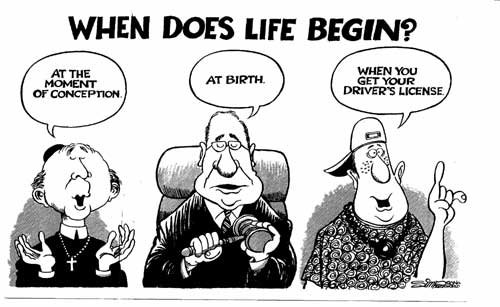You’re lying on a sandy beach on a hot sunny afternoon, enjoying a few hours of much needed laziness. As you open your eyes and confront the vastness of the ocean in front of you, light of 600nm wavelength hits your retina, kindling an impossibly long cascade of events in your brain: a molecule called retinal changes shape, neurons fire action potentials down the optic nerve, arrive at the lateral geniculate nucleus deep in the brain causing more action potentials in primary visual cortex in the back of your head, and so on ad infinitum. At some point, the mechanical wonder of 100 billion neurons working together produces something special: your experience of the color blue. What’s special is not that you can discriminate that color from others; nor that you are aware of it and paying attention to it. It is not notable that you can tell us about it, or assign a name to it. It’s that you have a subjective, qualitative experience of the color; there is something it is like to experience the color blue. Some philosophers call these experiences qualia – meaning “what kind” – but it is not important what kind of experience you are having, just that you are having one at all. Modern science hypothesizes that subjective experience is a product of the brain, but has no explanation for it.
The brain’s building blocks are neurons; their language is the action potential, an electrical impulse that relays information. Sensory molecules pick up information about the outside world and translate it into action potentials. The information is processed among many networks of neurons, and returns to the outside world via signals to muscles, which effect behavior. Somewhere between sensory molecules and muscles, the neurons organize to create systems for memory, attention, global access of information, self-awareness and language. How the brain achieves this feat is largely unknown, but neuroscientists are hard at work today trying to elucidate the mechanisms responsible. The philosopher David Chalmers calls these the “easy” problems of consciousness because science has the tools to ask questions about them and eventually solve them.
The easy problems have in common the fact that their explanation requires only a mechanism of their function; once we explain a mechanism by which neurons integrate information, for example, the problem of integration is solved. In contrast, experience, or the existence of qualia, is the “hard” problem of consciousness because it has no obvious function and is completely unmeasurable; science has no way of even proposing hypotheses about it.
Philosophical Zombies
Do you know that feeling you have when you fall in love? Most people describe it as something special, unexplainable, mysterious and wholly wonderful. Scientists will describe it in terms of molecules of oxytocin and vasopressin binding receptors on neurons in the midbrain. Surely love is not just a bunch of molecules running wild in your head? Yes and no. The molecules cause one to exhibit seriously strange behavior like not eating or sleeping, but out of their interactions emerges something more. That something is the feeling itself.
Physical rules and current neuroscientific evidence suggest that the brain should function as it does, but without producing feelings, sensations, or subjective experience; we should be philosophical zombies. Philosophical zombies are hypothetical beings that look and act exactly as humans do, but never actually have first-person qualitative experience of anything.
If a philosophical zombie met a nice girl, he would act as if he were in love. He would talk about his longing and joy, but he would not actually have that qualitative feeling of being in love. Even though they have brains just like ours, philosophical zombies are in essence robots – processing information, reporting mental states, having information of pains or emotions, having functional memory, but never actually having an experience of anything. There is nothing it is like to be a philosophical zombie; all processing goes on in the “subconscious.” This is exactly what science – in its current state – would predict. All cognitive processing should go on “in the dark,” without a conscious element.
Yet we obviously are not philosophical zombies. The processing that goes on in our brains is accompanied by a subjective experience. This experience is the most intimate thing you know – it’s almost impossible to imagine life without it – and for that reason, it is also the hardest thing to question or pinpoint in your own mind. Neuroscience hypothesizes that everything there is to your mind, including this subjective experience, is a product of physical events. But your experience itself is seemingly not physical; there is no thing, energy field, radiation or force that is your subjective experience that we currently know about. All we can measure are molecular events and electrical interactions among neurons. So where does experience come from and how can we study it?
Emergence
The answer may be found in the concept of emergence. From the interactions of a number of matching parts sometimes emerges a behavior or property that cannot be predicted from or reduced to the properties of the constituents. One such unexpected property comes from the simple behavior of individual ants, which produces a complex “society,” whose properties cannot be predicted from the behavior of individual ants. In fact, adding up the contributions of all individual ants does not produce an effect equal to the effect from the ant colony as a whole. Other examples of emergence include snowflakes, which assemble out of interactions among water molecules at low temperatures; temperature, which is based on molecular kinetics; the stock market, which has no central planning or regulation; human society; and subjective experience.
Subjective experience is an emergent property of the brain. As such, it cannot be predicted from our current knowledge of the brain, or reduced to its basal parts. Individual neurons are not aware of anything at all, but 100 billion of them working together are.
Modern neuroscientists aim to peek into the brain at higher and higher spatial and temporal resolutions with the goal of recording the electrical activities of vast numbers of neurons. Once they have recorded the activity, the thinking goes, the only remaining task will be to find out what the activity does. This logic is enticing, but falls short of a explaining the entirety of the brain’s features. One problem is that the entity that emerges – subjective experience – is qualitatively different from neurons and their activities, just as society emerges from interactions among individuals but is qualitatively different from individuals. Moreover, if we were to describe the activities of all individuals that comprise society, we would get no information about society; we would get noise from all the opposing actions. Likewise, if we describe the activities of all the neurons in the brain, all we get is activities of all the neurons in the brain.
An additional barrier is that subjective experience is closed off from outside observation. The contents of your experience are available only to you, and scientists have no way of collecting the data of experience directly. While some neuroscientists are satisfied with collecting first-person data via verbal (human subjects) or behavioral (animal subjects) reports, the fact is that as soon as the subject translates first-person experience into a report, the data becomes of third-person quality.
If aliens discovered earth, they would have no way of knowing that humans had anything going on between their ears beyond electricity and chemistry. This is why neuroscience is so exciting: the most magical machine in the universe is in your head, and we have the opportunity to find out what makes it so special. As neuroscience attracts increasing amounts of talent and funding, we must not forget the most mysterious, least tangible question about the brain.

 Now, Kim Kardashian is what you call a supernormal stimulus. She has everything that normally elicits a positive response but exaggerated. “Supernormal stimulus,” by the way, is attributed to the famous ethologist Niko Timbergen, who found that substituting a mamma-seagull’s white beak with its one red spot for a stick with three red spots made the chicks way more excited for food. Many more such examples have been described in a variety of animals.
Now, Kim Kardashian is what you call a supernormal stimulus. She has everything that normally elicits a positive response but exaggerated. “Supernormal stimulus,” by the way, is attributed to the famous ethologist Niko Timbergen, who found that substituting a mamma-seagull’s white beak with its one red spot for a stick with three red spots made the chicks way more excited for food. Many more such examples have been described in a variety of animals.